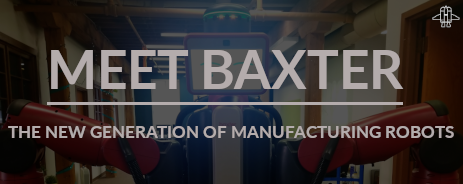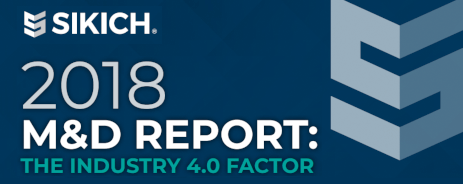
Artificial Intelligence At Work in Today’s Software
Whether you know it or not, you probably interact with artificial intelligence every day. If you use Smart Home technology, Amazon shopping, Apple’s Siri, or Google Assistant, you are already engaging with the stuff of yesterday’s science fiction. In fact, many recent technological breakthroughs have been directly assisted by artificial intelligence, and AI will continue to drive future technology.
Examples are everywhere. Currently, NASA is looking to artificial intelligence as the primary data analysis solution for an autonomous helicopter being designed for Mars. AI can solve problems as complex as supporting planetary exploration or as (seemingly) simple as helping you send a text via voice. Artificial intelligence is one of the most important factors for technological growth, so it’s important to understand at least the basics. This article aims to explain what artificial intelligence is and how it is used in modern software.
What is Artificial Intelligence?
Artificial intelligence was first defined in 1956 as “the science and engineering of making intelligent machines.” Computer scientists generally understand artificial intelligence as a software that can analyze data to anticipate problems, create solutions, take action, and adapt to unique challenges without supervision. Typically, artificial intelligence is broken down into one of three main categories:
Neural Networks
Neural networks are designed to mimic the biological structure of interconnected neurons within the human brain. These networks “are capable of modeling and processing nonlinear relationships between inputs and outputs in parallel.” Neural networks are powerful for problem solving, but the inner workings of these networks are incredibly complex to build and manage. Nevertheless, businesses increasingly use neural networks to assist with forecasting, customer research, risk management, and data validation. Research and analysis of consumer data that would take hundreds of hours of labor is being automated, making it readily available to businesses that implement this form of artificial intelligence.
Machine Learning
Machine learning is typically focused on analyzing statistics and data to help improve machine functions. One of the most common uses for machine learning is speech recognition. When you speak to a virtual assistant and see your speech translated to text, you are interacting directly with machine learning.
Deep Learning
Deep learning expands on the concept of neural networks. It stacks multiple layers of neural networks to work together, creating a system that can manage very complex tasks. One of the most recent and popular examples of deep learning is Google Duplex. This AI has the ability to call a business to make reservations and appointments for users. It was so successful that Google was criticized for creating an AI that was too realistic to differentiate from a human caller.
Contemporary Uses for Artificial Intelligence
The potential uses for artificial intelligence are limitless. Already, companies use AI to successfully automate transcription processes, instantly recording customer calls as text; to analyze consumer data and create marketing insights; and to run automated customer service chatbots that can engage with users 24/7, without wait times.
Gartner reports that 25 percent of customer service operations will be run by chatbots by 2020. They also report that by 2020, 30 percent of all B2B companies will employ AI to augment at least one of their primary sales processes.
Artificial intelligence is also being used to create content. Uses have ranged from creating business reports to creating articles based on incoming data for the Wall Street Journal. As you read the latest updates about your favorite sports team’s performance, or just following breaking news in general, remember: That content might have been generated by AI. It may surprise you to see AI behind your daily headlines, but there are numerous examples of this occurring.
Artificial Intelligence for Every Industry
No matter how traditional your industry, AI is likely to improve crucial processes. The applications of this technology are so broad that they’ll soon be found in every corner of the world economy. Here are a few examples of AI use in a variety of today’s industries and applications:
Artificial Intelligence in the Manufacturing Sector
AI is moving into manufacturing to increase efficiency for manufacturing processes across the board. Andrew Ng, the creator of the deep-learning Google Brain project, says, “AI will perform manufacturing, quality control, shorten design time, and reduce materials waste, improve production reuse, perform predictive maintenance, and more.”
For example, the same software used for facial recognition can be trained to quality-check products quickly, greatly decreasing the time required for quality assurance. Robotic arms are already being used by some companies to recognize parts for manufacturing and complete product builds without the need for human assistance.
Most importantly, AI is an excellent tool for predictive maintenance to reduce unplanned downtime. Asset failure accounts for 42 percent of all plant idling, totalling $50 billion in annual loss to manufacturers. With the assistance of AI, annual losses can be significantly reduced, and production time can be increased.
Artificial Intelligence and the Virtual Assistant
Siri, Alexa, and Google Assistant all use AI to complete the tasks that users ask of them. It is a form of weak AI with programmed responses, but the ability for Alexa or Google Assistant to solve problems quickly is impressive.
Although virtual assistants are most commonly known in the consumer market, they are currently being introduced to business markets as well. The introduction of multiple banking virtual assistants is reducing response times to banking consumer inquiries, and the assistants continue to learn from each conversation they have.
Artificial Intelligence in Consumer Vehicles (i.e., Tesla)
Tesla leads the pack for AI use in vehicles. Tesla vehicles use multiple forms of artificial intelligence, allowing their vehicles to use powerful features like self-driving capabilities.
Tesla also compiles data from vehicles on the road and uses AI to locate vehicle improvements. Because data can be transferred to and from Tesla’s vehicles, once an improvement is found, a software update can be passed down to vehicles to improve their performance.
Although Elon Musk regularly uses AI at Tesla and owns OpenAI, a company focused on AI research, he also has been vocal about the dangers of misusing a tool as powerful as artificial intelligence.
The Future of Artificial Intelligence
AI is here to stay. The ability to process data and problem-solve against data allows for computing to move technology forward at lightning speed. Machine learning has assisted NASA locate possibly habitable planets at increased speeds, and helped Alexa find the right playlist for your morning workout.
Depending on how you landed on this page, AI may be the reason you are reading this article. Because AI can touch any industry, and businesses are adopting it quickly, whatever our future looks like, it will probably be driven by artificial intelligence.




